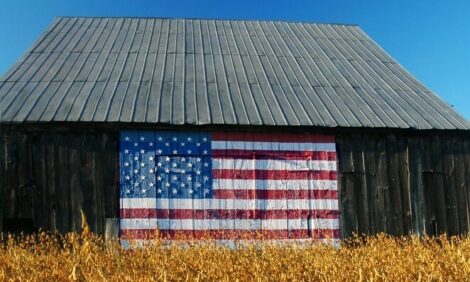



Processing Plant Work to be Made Safer
US - President Obama has announced new measures to improve worker safety in the latest budget blueprint.Asserting that mounting workloads and dwindling staff have hindered the government's ability to protect workers, President Barack Obama is pledging to increase the enforcement of workplace safety, reports News & Observer.
President Obama's budget blueprint, released on 26 February, seeks to increase funding to the Occupational Safety and Health Administration. The document does not provide precise amounts.
But the proposed funding increase for 2010 would enable OSHA to 'vigorously enforce workplace safety laws and whistleblower protections, and ensure the safety and health of American workers,' the budget proposal says. The extra money also would be used to increase enforcement of wage and hour rules, including child labor violations.
In an investigation of the poultry industry last year, The Charlotte Observer found that weak government enforcement, minimal fines and dwindling inspections have allowed companies to ignore hazards that can kill and injure workers.
Though both houses of Congress will write appropriations bills in coming months, lawmakers have shown signs that they will make OSHA a bigger priority. A 2009 appropriations bill now before Congress boosts spending and requires the agency to do a better job tracking injuries and illnesses.
In its investigation, The Charlotte Observer found that many workplace injuries are not recorded, and the government has made it easier for companies to hide injuries by changing record-keeping requirements and loosening stiff enforcement.
"After eight years of neglect, President Obama's strong commitment to additional resources to ensure the health and safety of American workers is a breath of fresh air," said Representative George Miller, a California Democrat who leads the House Education and Labor Committee.
Randy Johnson, a vice president at the US Chamber of Commerce, said money ought to be spent educating employers about workplace safety rather than trying to monitor every job site.
"Maybe if they provided more money to the poultry industry for education they would have been able to prevent those injuries," said Mr Johnson, who worked for OSHA in the Reagan administration.
The number of federal OSHA compliance officers has dropped by about 35 percent since 1980. Nationally, OSHA agencies inspect only about 1 percent of all workplaces each year.
"Over time, the agency has just been eroded," said AFL-CIO safety director Peg Seminario, who has been mentioned as a candidate to lead federal OSHA. "The consequence is that we've fallen further and further behind on addressing serious workplace health and safety problems."
Twenty-four states, including the Carolinas, operate their own workplace safety programs, while federal OSHA oversees safety in the remaining states.
Federal funding for the state-run OSHA programmes has lagged far behind inflation, rising only about 1 percent since 2001. Leaders of congressional committees concerned with workplace safety have said they will push for more federal funding for those states.
It is not yet clear whether and how the federal government will increase funding for those states, according to News & Observer.
North Carolina Labor Commissioner, Cherie Berry, a Republican recently elected to a third term, contends that regulators can do more to protect workers by cooperating with companies rather than by issuing stiff fines. That philosophy conflicts sharply with the approach favored by many congressional Democrats.
But even in states that run their own programs, the federal government's money, laws and oversight can significantly affect job safety.
In a $410 billion appropriations bill now before Congress to fund the current fiscal year, there is a $27 million increase to the agency's budget, for a total of $513 million.
That bill, passed by the House on 25 February and expected to be approved by the Senate in the coming week, dictates that the increase be used to rebuild OSHA's enforcement capacity.
"An important component of this mission is to enhance enforcement and oversight of injury and illness record-keeping to ensure complete and accurate recording and reporting by employers," it says.
It dictates that $1 million of the new money be used to ensure that illnesses and injuries are accurately reported. It also calls for a $52 million increase for the Bureau of Labor Statistics, to $597 million, with some of the money aimed at improving the agency's ability to capture accurate workplace injury statistics.
Newly confirmed Labor Secretary, Hilda Solis, a former Democratic lawmaker from California, is viewed as a friend to workers and labour unions. Several safety experts who have called for more vigorous regulation have been mentioned as candidates to lead OSHA, concludes the News & Observer report.











